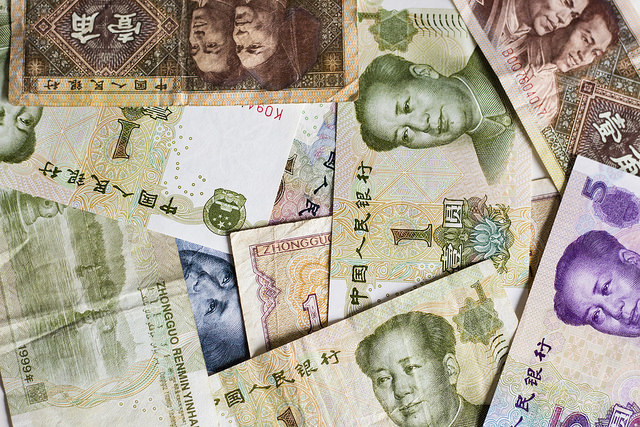
With currency intervention comes big trade deficits and accompanying job loss, says PIIE.
President Trump was out and about today on the mighty Ohio River, talking about the infrastructure proposal his administration plans to introduce in Washington.
I’d call this trip a missed opportunity for two reasons. First, the president – a big details guy – didn’t fill in any of the infrastructure plan’s blanks. And secondly, if the White House schedulers had planned it right and gone a little farther west of Cincinnati, the president could have caught the Madison Regatta and maybe would have seen some sweet flips.
Seriously sweet flips.
Anyway, while the president is out there pressing the flesh, life continues apace in DC.
The bars are gearing up to host watch parties for some highly anticipated congressional testimony.
And think tanks are still thinkin’, considering policy issues.
What were they thinkin' about?
One of those think tanks is the Peterson Institute for International Economics (PIIE), a respected trade policy organization with a centrist reputation. This week it has released a study, Currency Conflict and Trade Policy, that reviews the effects of – you guessed it – currency manipulation. What's more, it proposes a handful of strategies to combat it.
The Alliance for American Manufacturing is no fan of currency manipulation, a monetary policy by which a government can discount the cost of its exports – and simultaneously make a rival country’s goods more expensive. On an economy-wide scale and over a number of years, this adds up; research by the Economic Policy Institute suggests that Chinese currency manipulation played a significant role in America’s widening trade gap with that country and the accompanying manufacturing job loss.
Currency manipulation, particularly by China, has ebbed in recent years. But it still surfaces as an issue during presidential campaigns. In 2008, for instance, then-candidate Barack Obama brought it up. In 2012, Republican nominee MItt Romney called it an issue he’d tackle on “day one.” And Donald Trump said the same thing, before reneging.
By Peterson’s estimation, the backlash against globalization that played out in 2016 elections around the world was helped along by currency manipulation, which it says totaled more than $600 billion between 2003 and 2013, and added about $200 billion to the U.S. goods trade deficit annually.
So how would Peterson suggest the U.S. government combat currency interventions? For one, it recommends a rule addressing currency policies be included in all future trade agreements – including the possible NAFTA renegotiation. It also calls for more cases to be brought specifically on currency to the World Trade Organization. Third, it suggests the establishment of a council of countries with dominant currencies
Here’s another idea from Peterson:
(The study’s authors) argue that the United States should implement a new policy of “countervailing currency intervention” (CCI) against all systemically important (G-20) countries. Under such an approach, the United States would announce that it would offset the effects of currency manipulation through equal purchases of the intervening country’s currency. This is intended to deter any return of the practice and, like any deterrent if credible, probably would not have to be used much if at all.
Find the entire report here.
